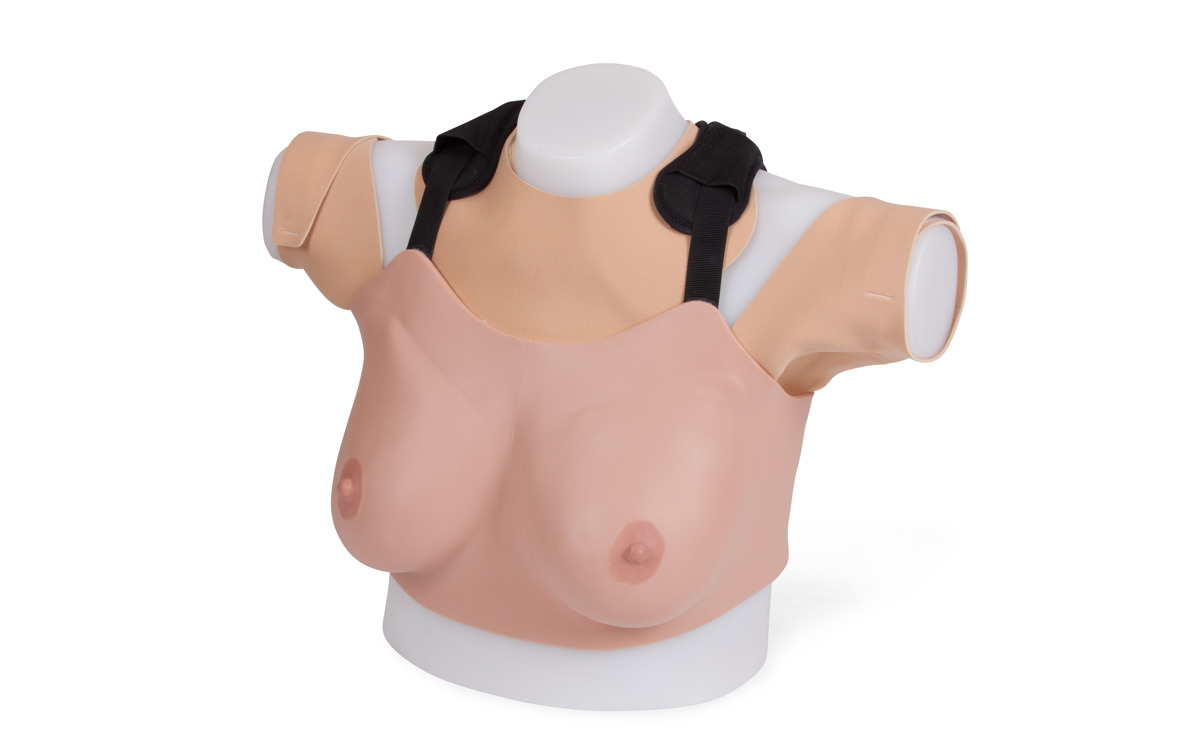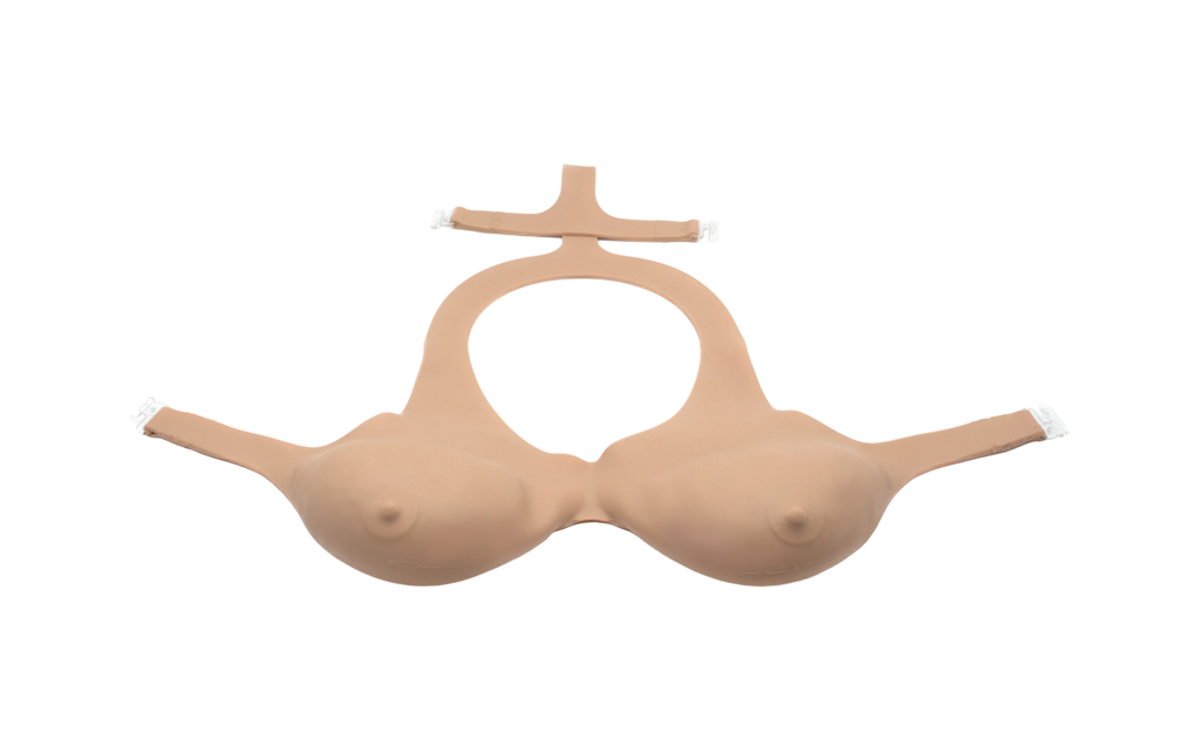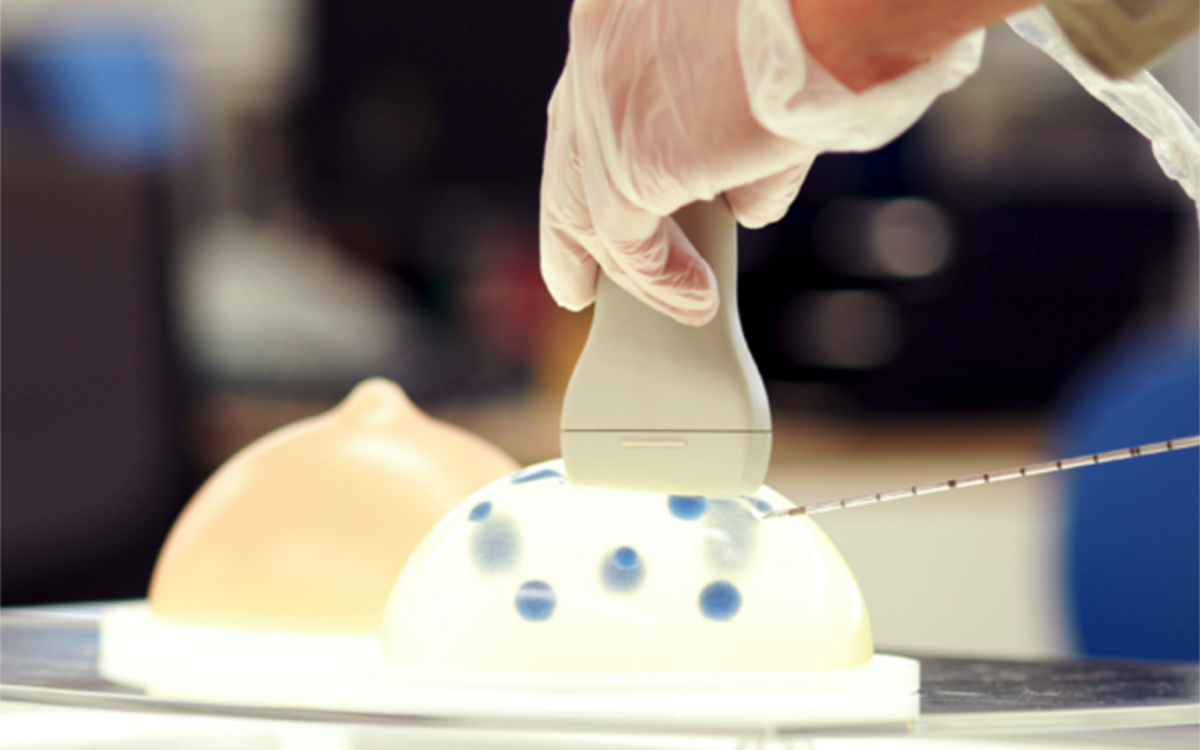Add the Female Breast Overlay onto a variety of simulation manikins for expanded training opportunities.
- Increase training realism for health screenings, examinations and emergency response
- Boost patient handling skills with training scenarios that include a range of anatomical presentations
- Strengthen staff preparedness for gender inclusive care scenarios
- Support more accurate practice of procedures such as palpation, positioning, and fitting of medical devices
- Double simulation capabilities without purchasing additional full-body or torso manikins
- Open discussion regarding adapting to different patient anatomy
Fully adjustable
Central Release Buckle fastenings on the Female Breast Overlay clip at the side of the torso for minimal interference during training, and sit securely under the arms of full-body manikins.
Add the Female Breast Overlay onto a variety of simulation manikins for expanded training opportunities.
- Increase training realism for health screenings, examinations and emergency response
- Boost patient handling skills with training scenarios that include a range of anatomical presentations
- Strengthen staff preparedness for gender inclusive care scenarios
- Support more accurate practice of procedures such as palpation, positioning, and fitting of medical devices
- Double simulation capabilities without purchasing additional full-body or torso manikins
- Open discussion regarding adapting to different patient anatomy
Fully adjustable
Central Release Buckle fastenings on the Female Breast Overlay clip at the side of the torso for minimal interference during training, and sit securely under the arms of full-body manikins.
Adjustable tri-glide buckles at the shoulders and D-DOT fastening connecting the two straps allow for easy fitting to existing training models.
Diverse Training
With the addition of a female chest overlay, the scope of medical simulation training (including cardiopulmonary resuscitation) can be broadened to include the societal and gender biases that are present in some existing training programs.
Evidence relating to diversity of medical simulation manikins:
- The DIVERSE Study surveyed CPR training organisations, looking at the characteristics of the manikins used within training courses. Out of 2,383 manikins, 12% were non-white, 6% female, <1% non-lean physique
- Does the sex of a simulated patient affect CPR? Indicated that “rescuers had better hand placement for CPR on the female” manikins but were reluctant to remove the female's clothing, rescuers were hesitant to remove the female’s clothing (though no conclusive studies have been done, this could cause issues with pad placement and defibrillation)
- Implementation of a Breast Adjunct for CPR Training Manikins Increased Reported Comfort in Performing CPR on Women. Highlights that bystander CPR improves a victim’s chance of survival (regardless of anatomy), and that training with female simulation manikins allowed trainees to feel more comfortable through familiarisation
- CPR training as a gender and rights-based healthcare issue, found that “most adult CPR manikins are flat-chested (95%) and appeared more representative of the male sex” and the “vast majority (90%)” appeared white, lean and androgynous



















